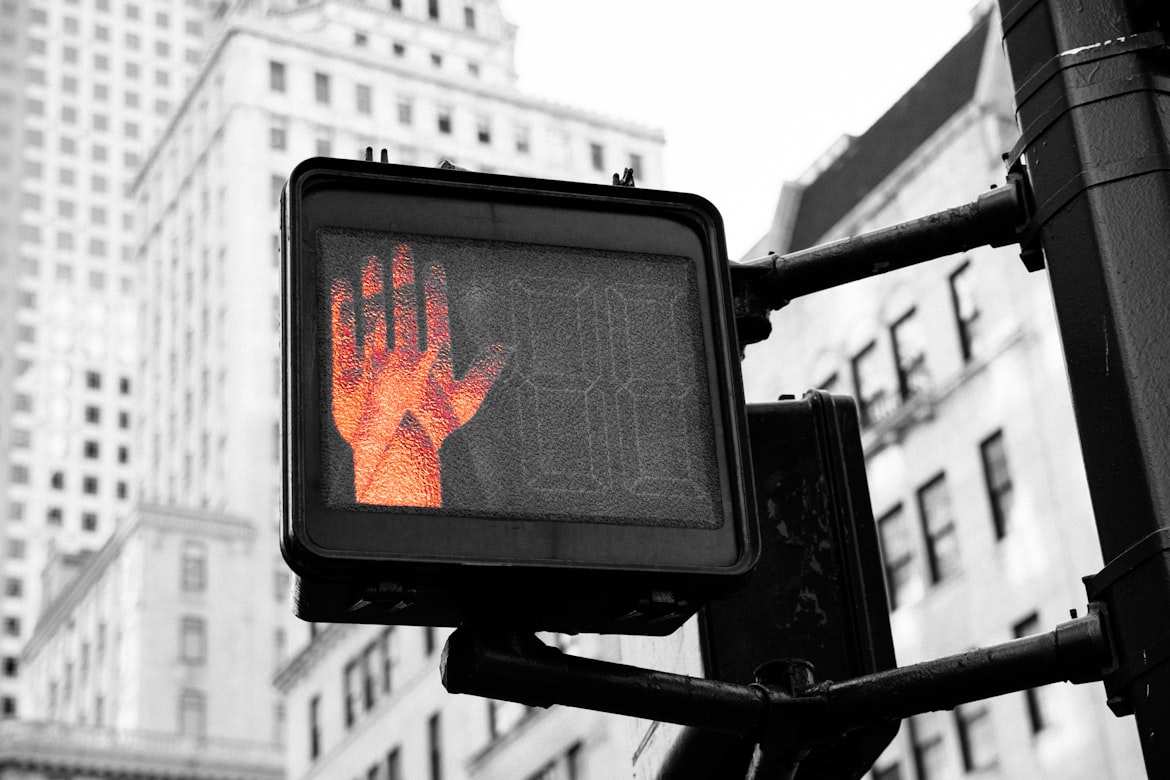Why Do Stocks Get Halted? After the recent meme stock phenomenon of the last few years, it may have come as a surprise to many investors that some publicly-marketed securities can actually stop trading for a variety of perfectly legal reasons.
In this article, we’ll examine the precise conditions that give rise to these trading halts, and detail the consequences that follow from such actions.

What is a stock halt?
A stock halt is a temporary suspension of trading in a particular security, market, or group of exchanges. Halts are usually implemented when there’s an imbalance in buy and sell orders, or when there’s news that could materially impact the price of an asset.
Depending on the reason for the halt, trading may resume after just a short interlude of time. However, in some cases, the suspension may last for a number of days.
On What Grounds Can A Stock Be Halted?
A stock halt can be initiated for several reasons. The most common ones include:
1. A security fails to meet listing requirements
When a company doesn’t meet an exchange’s listing requirements, or if a business is behind in its required public filings, a trading halt may occur. This would be an example of a trading suspension initiated by the SEC.
2. Pending news is about to be released that could considerably affect stock prices
A stock market can pause trading in an individual security when a company is about to release important news. Announcements of this sort often refer to things such as upcoming mergers or acquisitions, regulatory developments, or any other unexpected information that would significantly alter the stock price.
Trading goes live again when enough time has passed for news organizations to share all the pertinent details with market participants. This gives investors an opportunity to appraise the full gamut of relevant information.
To mitigate the likelihood of a stock halt of this kind, companies will normally only release sensitive information after the market has closed.
3. Severe lack of market liquidity
If there is not a sufficient number of buyers in a market to adequately fulfill trades, an exchange may decide to halt trading until such liquidity has been restored.
4. Periods of high volatility
Volatility can lead to markets being halted when an exchange experiences a wild swing in stock quotations. This can happen when there are large buy or sell orders, or when news events occur that cause a dramatic change in price.
The purpose of a trading halt is to allow investors time to reassess their positions before resuming trading.
Market-wide selloffs often cause an automatic cessation in trading, triggering a “circuit breaker“ halt that can last for a full day.
The exact length of the delay depends on the degree to which the S&P 500 Index has declined from its previous day’s trading, resulting in a coordinated cross-market stock halt on all exchanges.
Declines of up to 7% and 13% activate a 15-minute stock halt, while a fall of 20% triggers all stocks to be suspended for the remainder of the trading day.
Who Is Responsible For Halting A Stock?
A trading halt can come about through the decision of a broker, an exchange, or the SEC.
The most common type of stock halt happens when an exchange suspends trading. Minor stock halts of this kind occur daily, although broker-led halts are also becoming a more frequent event.
How Long Does A Typical Stock Halt Last For?
Although most trading halts are usually resolved within a few minutes or hours, in rare cases a suspension may last for several days or even longer. It all depends on the reason for the halt, and how long it takes for the prevailing issue to be resolved.
For example, regulatory halts usually last the longest, ranging anywhere from a few hours to a day or more. News pending halts are typically shorter, lasting only until the news is released. Order imbalance halts occur when there is an imbalance of buy and sell orders and can last anywhere from a few seconds to a few minutes.
In the case of suspected market manipulation or filing irregularities, the SEC can legally suspend trading in a stock for a total of ten business days.
How Can You Find Out Why A Stock Has Been Halted?
When a stock is suspended from trading, various halt codes can be used to identify the reason for the stoppage.
For example, a T6 halt code means an exchange believes there’s been extraordinary market activity of some kind, whereas an H11 halt code means that there’s regulatory concern surrounding a certain security.
Some codes also signal the resumption of trading after a halt has been called. The halt code R9, for instance, tells investors that any previous filing requirements have been satisfied or resolved. Furthermore, a T3 code lets the market know when an asset will begin trading again, especially after a noteworthy news story has been wholly disseminated.
Conclusion: Is A Stock Halt Good Or Bad
Whether a stock halt is good or bad depends entirely on the circumstances.
For example, if a company has just made a positive announcement to the market, a subsequent trading halt may be seen as bad for short sellers – investor sentiment is high, and people are eager to buy the stock.
On the other hand, if a company is under investigation for fraud or market manipulation, an associated stock halt may be seen as a good thing – it allows investigators to gather evidence, and protects investors from the harmful effects of corporate criminality.
The author has no position in any of the stocks mentioned. Financhill has a disclosure policy. This post may contain affiliate links or links from our sponsors.